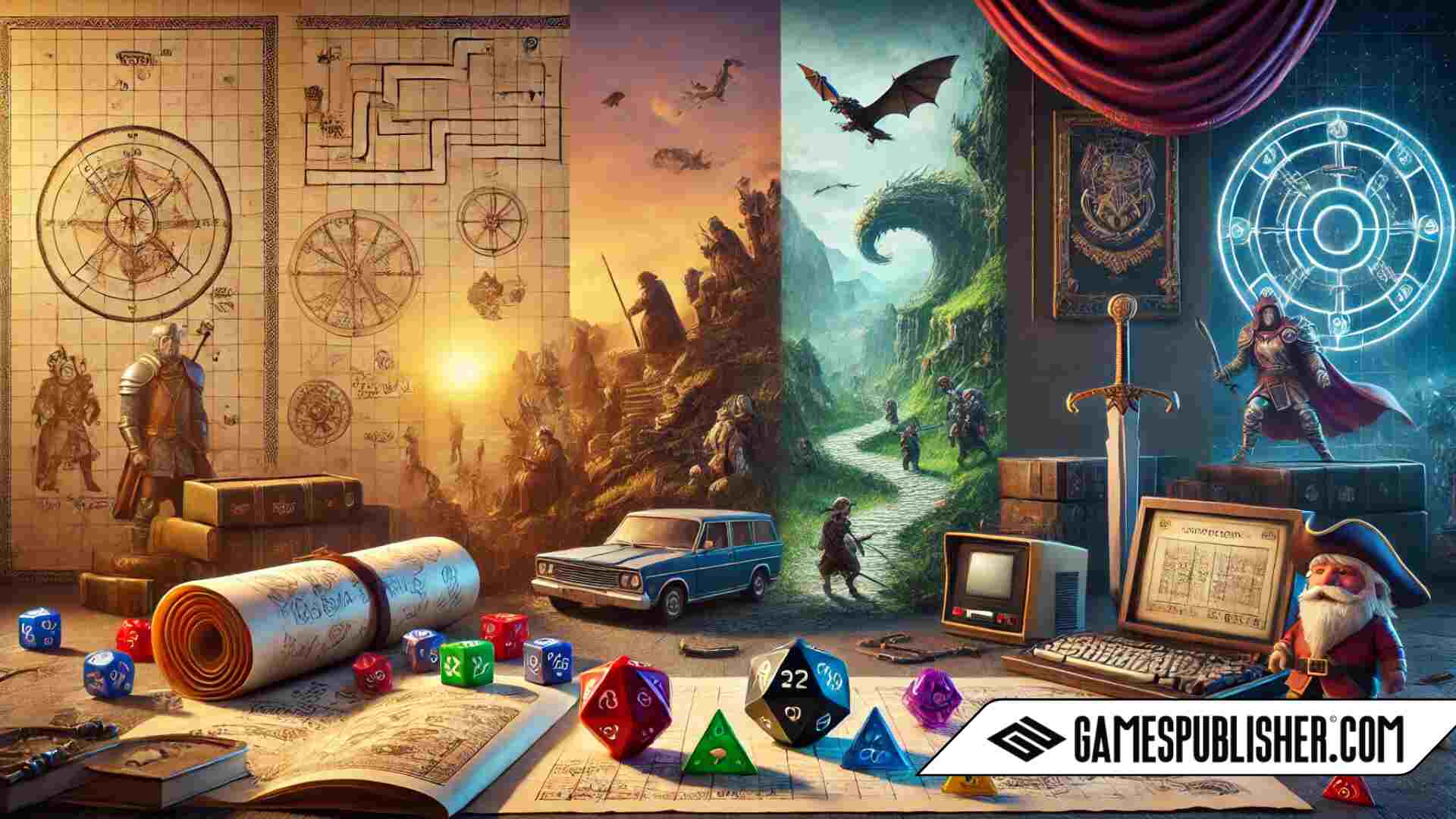Have you ever wondered where some of the most iconic video game genres, like Role-Playing Games (RPGs) and Adventure games, originated? These genres are known for their strong stories and engaging gameplay.
They have played a huge role in shaping the entire video game industry. Understanding how they started and how they evolved is not just for enthusiasts but is also essential for game developers and publishers.
Knowing the history of RPGs and Adventure games helps game developers build better games. It also helps publishers find the right audience for these games. By learning about their past, we can understand what makes these genres so interesting and how they continue to shape modern game design.
1. What Defines a Game Genre?
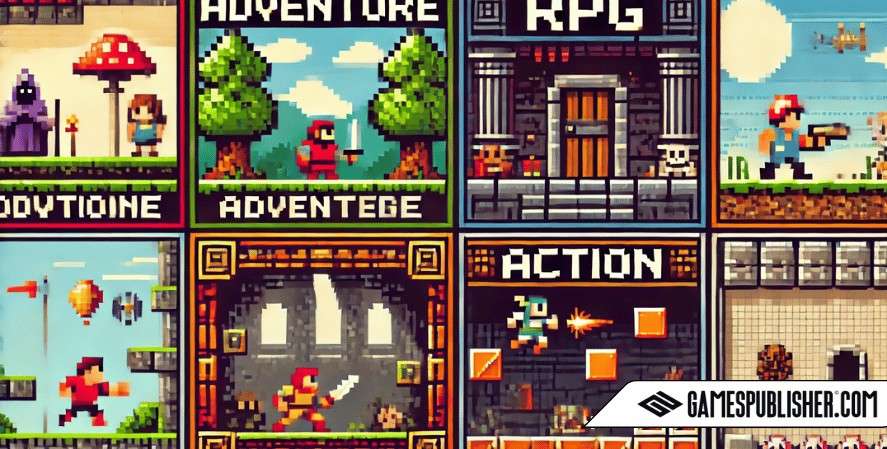
Explaining Game Genres
A “game genre” is a way to group games based on their style, gameplay, and stories. This classification helps both developers and players know what to expect from a game. For example, an adventure video game focuses on exploration, solving puzzles, and following a strong story.
RPGs, on the other hand, are about building characters, going on quests, and exploring big worlds.
Why Game Genres Matter
Game genres are important in the gaming industry. For developers, genres guide the design of a game. They make sure that the gameplay fits what the players expect. For video game publishers, genres help them market the game to the right people. As genres evolve, they often mix together to create new kinds of games, like Action RPGs or Adventure RPGs. This way, developers can attract a wide range of players and keep the core fans happy.
2. The Origins of RPGs (Role-Playing Games)

Tabletop Beginnings: Dungeons & Dragons Influence
RPGs started with tabletop role-playing games like Dungeons & Dragons (D&D), which came out in 1974. Created by Gary Gygax and Dave Arneson, D&D introduced basic ideas that would become key features of RPG video games.
These include creating a character, gaining experience points, and going on quests. In D&D, players take on the roles of characters in a made-up world, battling monsters, and shaping the story through their decisions.
This style of gameplay inspired early computer RPGs, which tried to bring the same feeling of adventure to video games.
Early Video Game RPGs
The first RPG for computers was Akalabeth: World of Doom (1979), made by Richard Garriott. It was a simple game but laid the foundation for Garriott’s more famous series, Ultima, which started in 1981. Ultima introduced open-world exploration and complex storytelling, which are still core elements of RPGs today.
Another important early RPG was Wizardry (1981). It focused on turn-based combat and managing a team of characters. These games set the standard for what RPGs could be, influencing countless RPGs that came after them.
Japanese RPGs (JRPGs)
In the 1980s, Japanese developers started making their own versions of RPGs. This led to a new style called Japanese RPGs or JRPGs. The first big JRPGs were Dragon Quest (1986) and Final Fantasy (1987). They made RPGs popular outside of North America and set a new standard for the genre.
JRPGs focused more on story and character development. They had a simple combat style and colorful graphics, which made them stand out. These games shaped how RPGs are seen today and introduced new ways of telling stories.
3. The Origins of Adventure Video Games
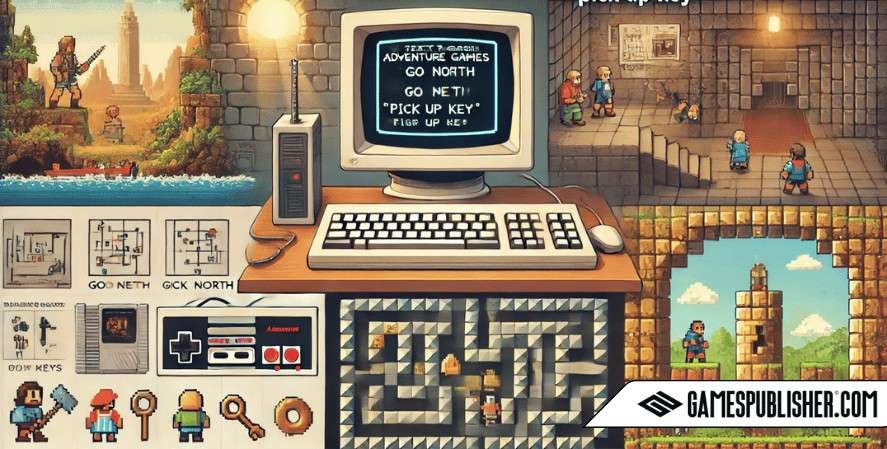
Text-Based Adventure Games
The first adventure video game was Colossal Cave Adventure (1976), created by Will Crowther and Don Woods. This was a text-based adventure game where players typed commands like “go north” or “open door” to explore a cave.
This style of game made players use their imagination since there were no graphics. It introduced ideas like puzzle-solving and exploration, which are still used in adventure video games today.
The Graphic Revolution: Point-and-Click Adventure
In the 1980s, adventure games began to use graphics instead of just text. One of the first games to do this was King’s Quest (1984) by Roberta Williams. King’s Quest let players use simple commands to interact with characters and objects in the game world.
The genre really took off with games like Monkey Island (1990) by LucasArts. These point-and-click adventure games used the mouse to help players explore the game world, solve puzzles, and talk to other characters. This made the games easier to play and helped the genre reach a wider audience.
The Role of Narrative and Exploration
The core of adventure games is their story. Text-based games relied on written descriptions, while graphic adventures added visual details to bring the stories to life.
Adventure games became known for their strong plots, puzzles, and choices that changed the story. This focus on storytelling made them different from RPGs, even though the two genres share a lot of similar elements.
4. The Growth and Diversification of RPGs and Adventure Games
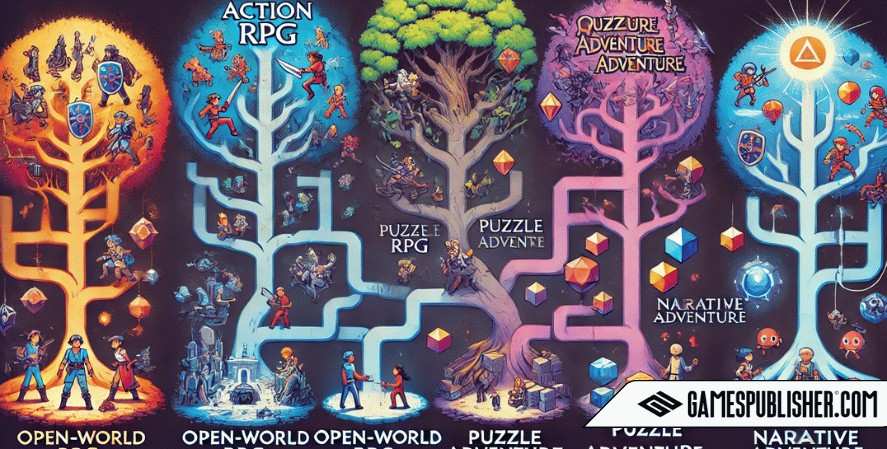
Hybridization and Genre Crossovers
Over time, RPGs and adventure games began to mix. Games like The Legend of Zelda (1986) combined action, puzzle-solving, and RPG features. Zelda’s mix of fighting, exploring, and character-building created a new type of game that became the template for action-adventure titles.
Adventure games also started using RPG ideas, such as letting players level up or make choices that changed the story. These mixes of genres created new ways to play and made it hard to classify some games strictly as RPGs or adventure games.
Action RPGs and Open-World Adventures
As gaming technology improved, a new type of RPG appeared: Action RPGs. Games like The Elder Scrolls series and The Witcher series brought real-time combat and bigger worlds into the RPG formula. These games focused on exploring large worlds and making meaningful choices.
Meanwhile, open-world adventure games like Grand Theft Auto and The Legend of Zelda: Breath of the Wild pushed the limits of exploration. They let players go anywhere and do almost anything, creating huge, interactive worlds to discover.
5. The Legacy and Impact on Modern Games
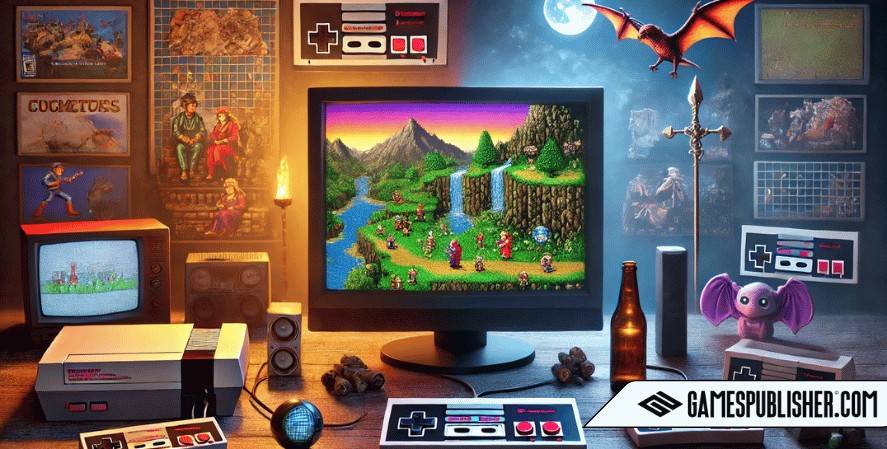
Influence on Modern Game Design
Classic RPGs and adventure games shaped how games are made today. They introduced ideas like character creation, deep stories, and player choice, which are now common in many genres. Today’s best story games on PC, such as Disco Elysium and Life is Strange, continue to use these ideas.
What’s Next for RPGs and Adventure Games?
The future of RPGs and adventure games looks exciting. New technology like AI and virtual reality will make it possible to create even deeper worlds and stories. This will allow developers to craft unique experiences that adapt to how each player interacts with the game.
Conclusion
RPGs and Adventure games have come a long way. They started as simple tabletop games and text-based adventures, and now they’re some of the most beloved genres in the video game industry. Their focus on storytelling, exploration, and character-building has influenced countless other genres.
For game developers and video game publishers, knowing the history of these genres is essential for making great games that stand out. By blending classic ideas with new technology, developers can continue to create the best adventure video games that captivate players for years to come.
Loading survey...

